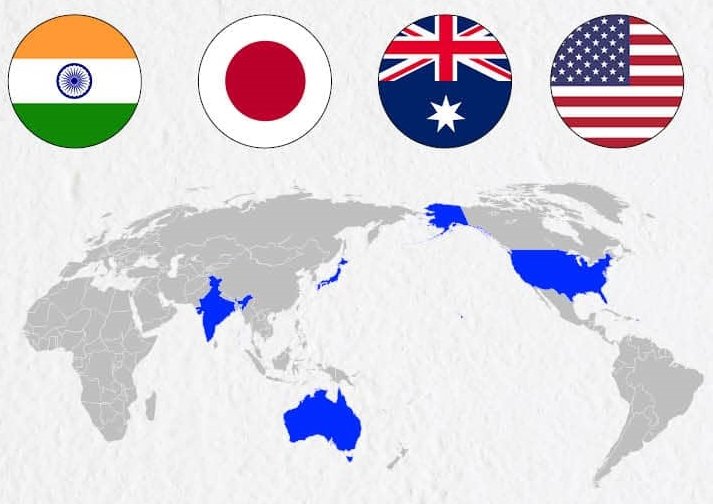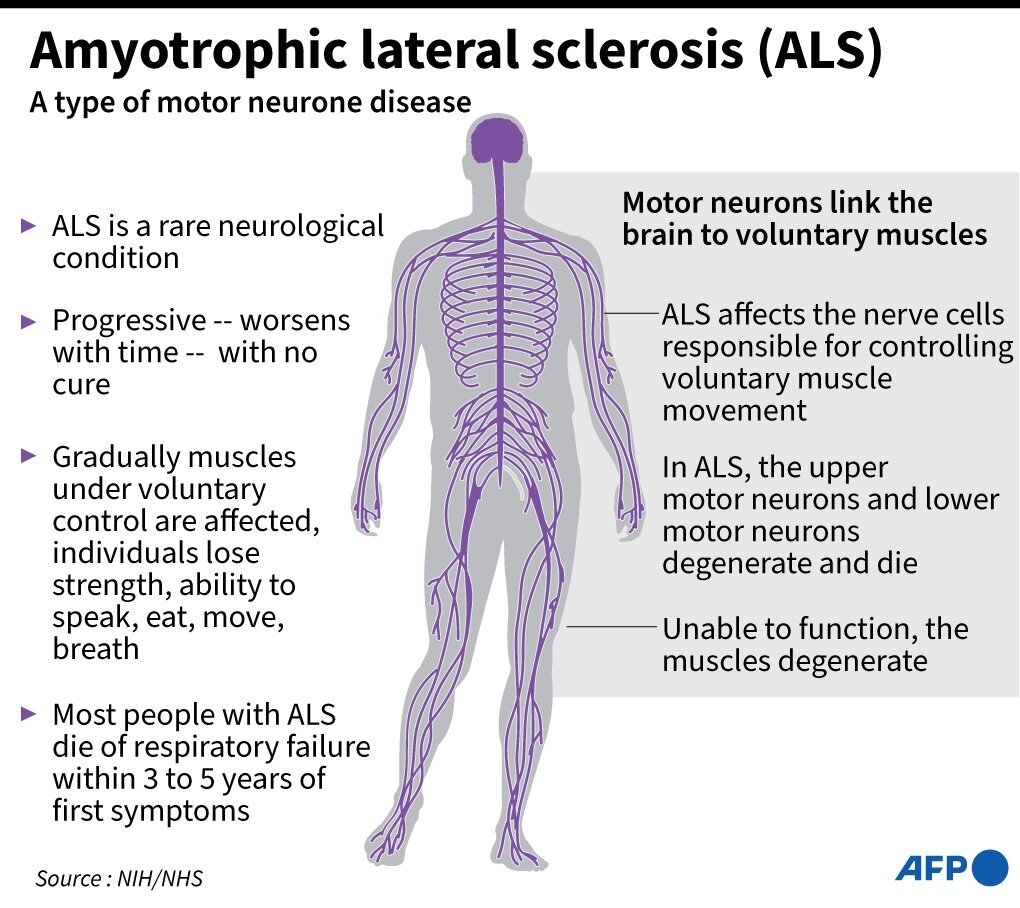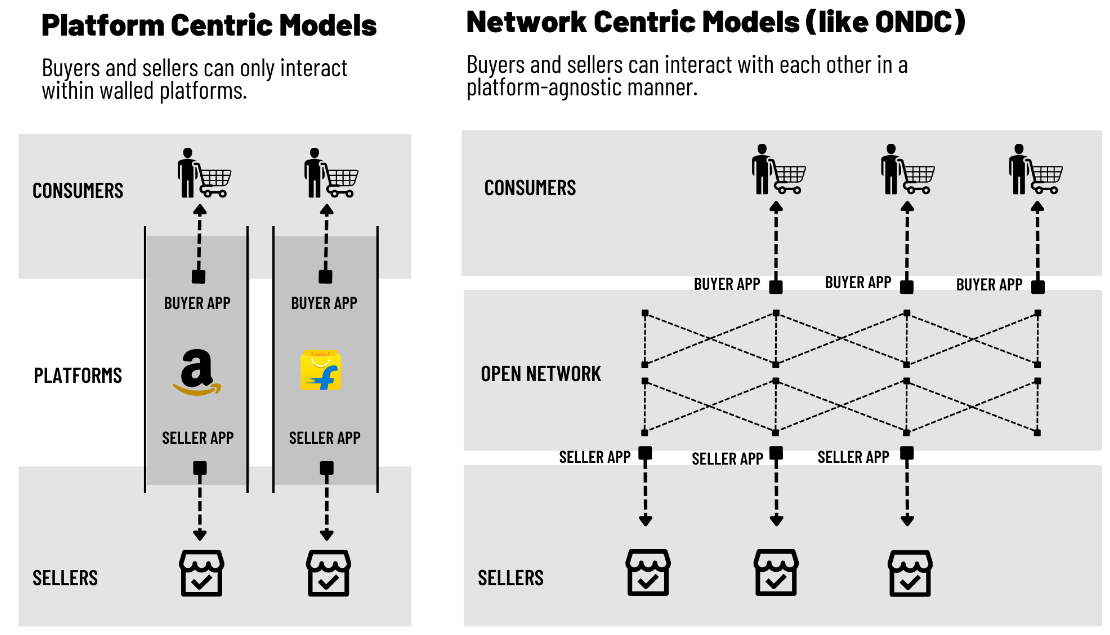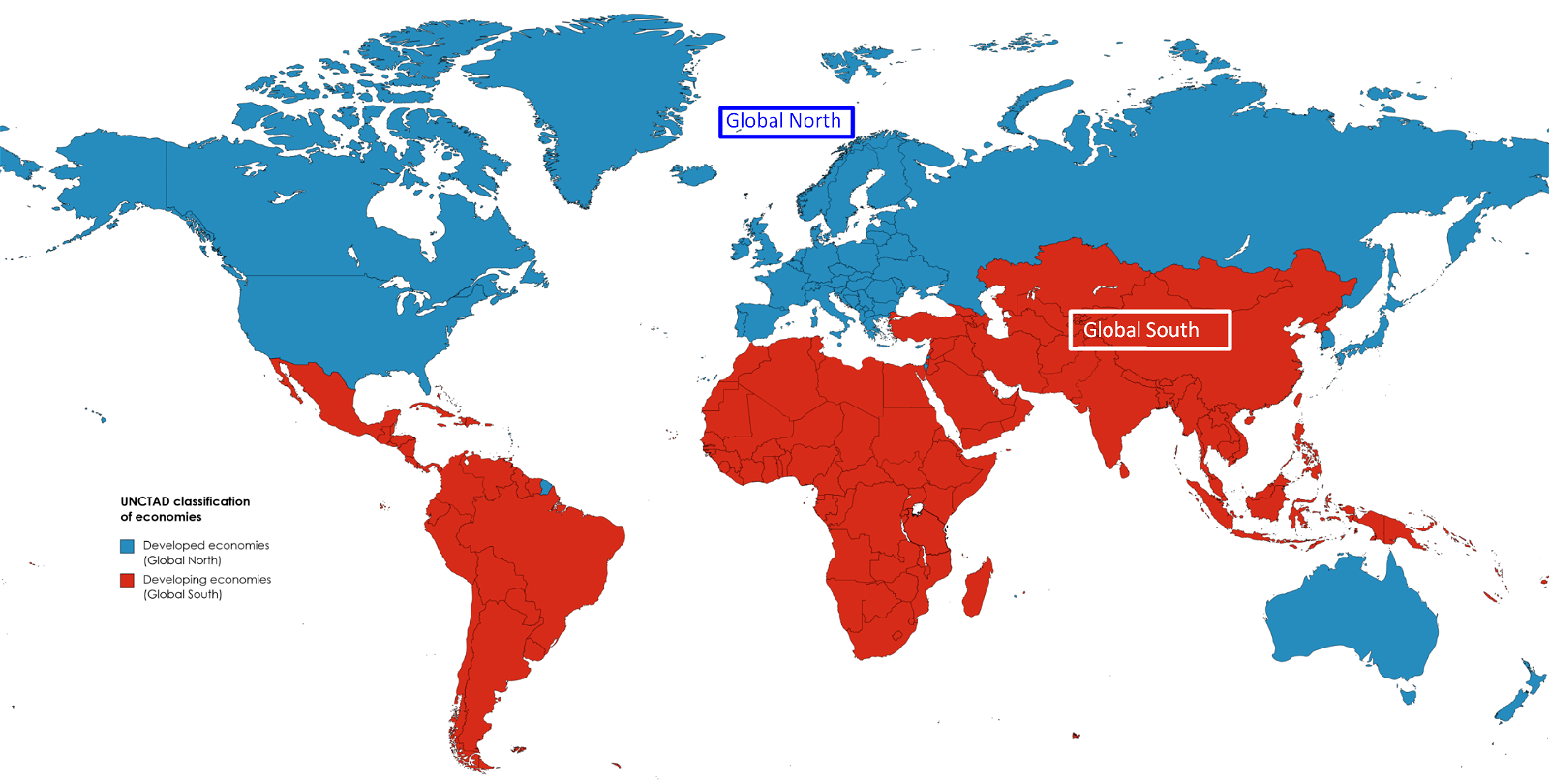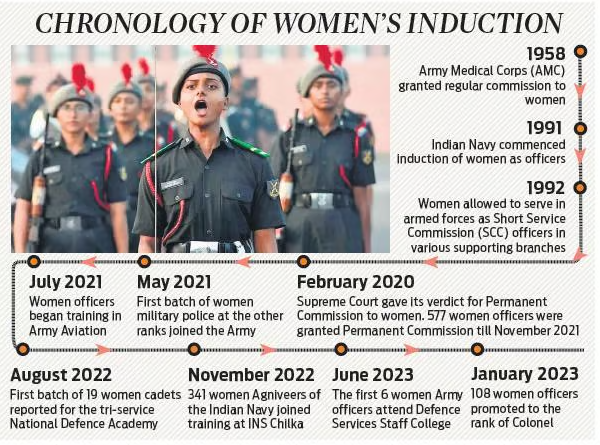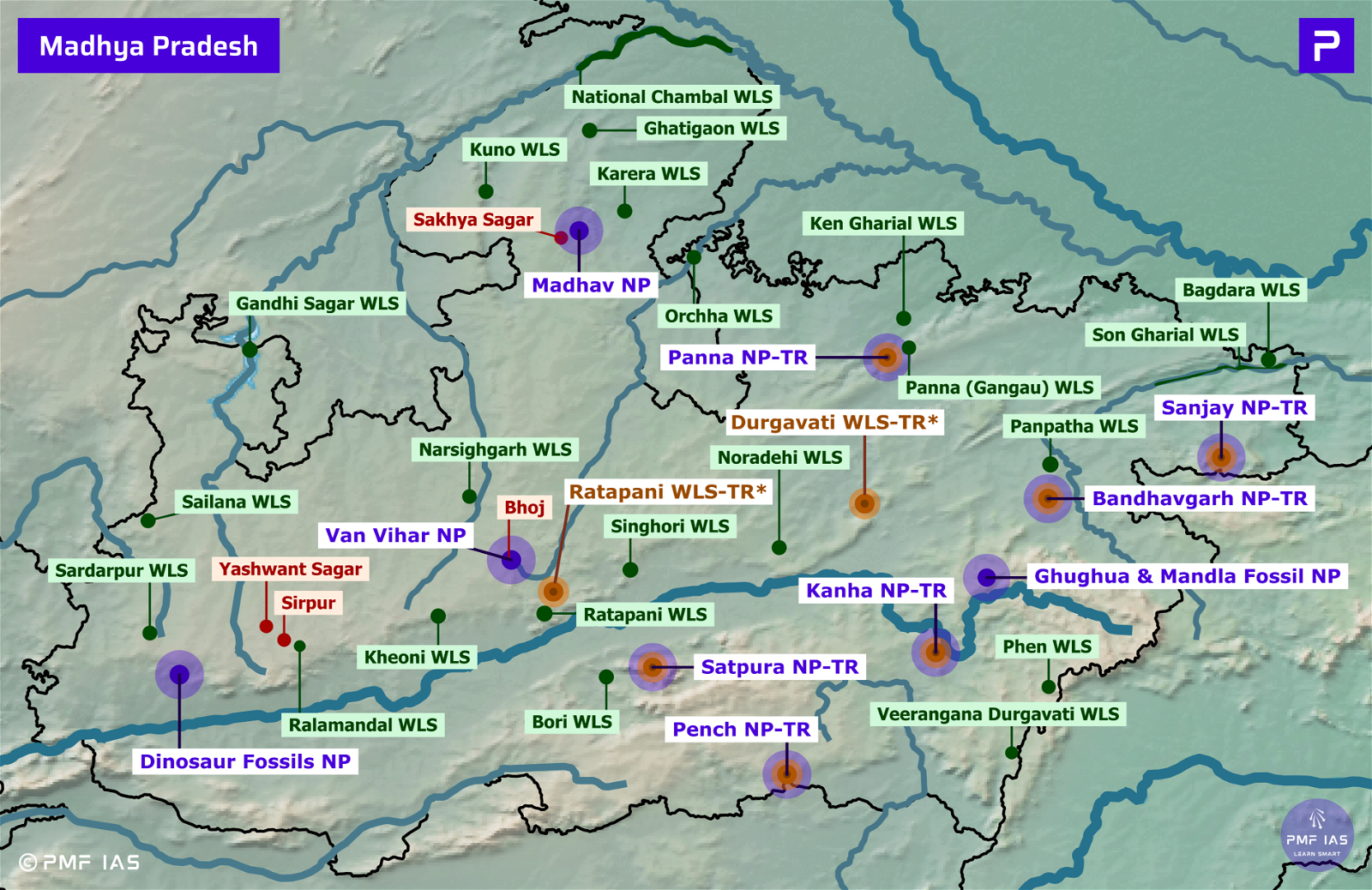
Current Affairs November 22, 2023: Tantalum, E-Prime Layer, Mirabai, Project Collaboration Agreement, Sickle Cell Anaemia, POCSO, Dhangar Community in ST List, Amazon River Turtle, Ghol Fish, Climate finance, Microfinance, Rapid Innovation and Startup Expansion, Operation Clean Sweep, Kavro Doma 360
Subscribers of "Current Affairs" course can Download Daily Current Affairs in PDF/DOC
Subscribe to Never Miss an Important Update! Assured Discounts on New Products!
Must Join PMF IAS Telegram Channel & PMF IAS History Telegram Channel
{GS1 – Geo – EG – Mineral Resources} Tantalum
- Context (IE): Tantalum, a rare metal, is found in the Sutlej River sand in Punjab.
- It is grey, heavy, hard, ductile, and one of the most corrosion-resistant metals today.
- High corrosion resistance is due to the formation of a stubborn oxide layer.
- It is highly resistant to chemical attack below 150°C and is only susceptible to acidic solutions with fluoride ions and free sulfur trioxide.
- It boasts an extremely high melting point, surpassed only by tungsten and rhenium.
Uses of Tantalum
- Electronic sector: The capacitors made from tantalum can store more electricity in smaller sizes without much leakage than any other type of capacitor. Ideal for use in smartphones, laptops, etc.
- Medical: It is a biocompatible metal, making it an excellent choice for medical implants.
- Substitute of platinum (which is more expensive) due to its high melting point.
- Other sectors: Chemical industry, aerospace, laboratory equipment, etc.
|
{GS1 – Geo – PG – Geomorphology} E-Prime Layer
- Context (HT): Researchers have revealed the presence of a new layer, the E-Prime layer, in the outermost part of the Earth’s Core.
- The formation of the new enigmatic layer is a result of “surface water penetrating deep into the planet.”
- This latest research suggests that tectonic plates carrying surface water have transported it deep into the Earth over billions of years.
- Upon reaching the core-mantle boundary, this water initiated significant chemical changes, influencing the core’s structure.
- This chemical interplay results in the creation of a hydrogen-rich, silica-depleted top core layer.
{GS1 – MIH – Personalities} Mirabai
- Context (PIB): Recently, the Sant Mirabai Janmotsav was organized to celebrate the 525th Birth Anniversary of Sant Mirabai.
- Mirabai was a Rajput princess born in 1498.
- She was married into the royal family of Mewar against her wishes. She escaped from the royal palace to live as a wandering saint.
- She became a disciple of Ravidas, a saint from a caste considered “untouchable”.
- Mirabai was the best-known female poet within the Bhakti tradition.
- She was a great devotee of Lord Krishna and composed innumerable bhajans (songs) expressing her devotion.
- Her songs openly challenged the norms of the “upper” castes and became popular with the masses in Rajasthan and Gujarat, sung equally by men, women and those from lower castes till date.
{GS2 – MoA – Initiatives} Project Collaboration Agreement
- Context (IE): The Ministry of Ayush and the World Health Organization (WHO) have signed the Traditional and Complementary Medicine ‘Project Collaboration Agreement’.
- This is the 3rd ‘Project Collaboration Agreement’ signed between the Ministry of Ayush and WHO.
|
Objective
- Integrate safety and quality aspects of Traditional and Complementary Medicine into India’s National Health System and disseminate them at the international level.
- Strengthen the system of training and practice in the field of Complementary Medicine System ‘Siddha.‘
- Formulation of guidelines for the listing of Traditional and Complementary Medicines, safety and related efforts, etc.
- Develop an International Herbal Pharmacopoeia focusing on herbs found in South-East Asia.
{GS2 – Social Sector – Health – Disease} Sickle Cell Anaemia
- Context (IE): The United Kingdom became the first country to approve gene therapy for sickle cell anaemia (SCA).
Sickle Cell Disease (SCD)
- SCD is a group of inherited red blood cell (RBC) disorders that affect haemoglobin, the protein that carries oxygen through the body.
- Normally, RBCs are flexible disc-shaped cells that move easily through blood vessels..
- In SCD, RBCs become crescent or sickle-shaped due to a genetic mutation of haemoglobin.
- These sickled RBCs do not bend or move easily and can block blood flow to the rest of the body.
- Symptoms/complications of SCD: Pain, anaemia, jaundice, stroke, organ failure etc.
- Treatment: A blood and bone marrow transplant was the only cure for SCD, but it was not for everyone because of the dearth of donors and the associated risk.
|

Sickle Cell Anaemia (SCA)
- SCA is a type of SCD that causes the most severe anaemia.
- It is the most common type of SCD.
Gene Therapy for SCA
- Gene-editing therapy has been successfully used in the UK to cure SCA patient.
- The drug Casgevy, uses the gene-editing tool CRISPR-Cas9 (Clustered Regularly Interspaced Short Palindromic Repeats and associated protein 9) for this purpose.
- This therapy involves modifying the patient’s DNA by specifically targeting and replacing the faulty haemoglobin gene with a healthy one.
- To do this, stem cells are taken out of the bone marrow, edited, and infused back into the patient.
- This restores normal haemoglobin function, offering a potential cure for a lifetime.
|

Why Gene Therapy for SCA is Significant for India?
- India has the second-highest disease burden of SCA globally after African countries.
- An estimated 30,000-40,000 children in India are born with the disorder every year.
- It is more prevalent among India’s tribal population; SCA affects one in 86 births among the Scheduled Tribe (ST) population.
- SCA is highly prevalent in 15 Indian states, with Maharashtra leading in incidence.
Initiatives by India for SCA
National Health Mission (NHM)
- Under NHM, GoI supports the states for prevention and management of SCA.
- NHM aims for universal access to affordable, quality healthcare services that are accountable and responsive to people’s needs.
State Haemoglobinopathy Mission
- It has been established in MP to tackle the challenges in screening and managing SCA.
- It was launched in 2021.
National Sickle Cell Anaemia Elimination Mission (NSCAEM)
- NSCAEM aims to eliminate SCA as a public health problem in India before 2047.
- It was introduced in the Union Budget 2023.
- It is being implemented in 17 states: Gujarat, Maharashtra, Rajasthan, MP, Jharkhand, Chhattisgarh, WB, Odisha, TN, Telangana, Andhra Pradesh, Karnataka, Assam, UP, Kerala, Bihar, and Uttarakhand.
- It is executed in a mission mode as part of the National Health Mission (NHM).
{GS2 – Vulnerable Sections – Children} POCSO Act
- Context (PIB): The SC directed the National Commission for the Protection of Child Rights (NCPCR) to formulate Model Guidelines with respect to Support Persons under Section 39 of the POCSO Act in consultation with the State and UTs.
- The SC also directed the States and UTS to frame rules for their states/UTs based on the Model Guidelines.
- The SC said that:
- The state has an obligation to provide support persons to POCSO victims, which cannot be made optional.
- A support person should not be left to the parent’s discretion; in all cases, the option of availability of a support person should be made known to the victim’s parents.
- Section 39 of the POCSO Act requires the states/UTs to prepare guidelines for the use of NGOs, professionals, and experts or persons to be associated with the pre-trial and trial stage to assist the child.
- The main objective of the support person is to provide emotional and psychological support to the child victims during the legal proceedings and further ensure their well-being and protection.
- In 2013, on request from several State Governments, Model Guidelines were developed by the Ministry of Women and Child Development.
POCSO Act and Age of Consent
- Currently, the age of consent under the POCSO Act is 18.
- The consent of a child (below 18 years old) is immaterial, and consensual sexual intercourse with or among adolescents is treated on par with rape.
|
Law Commission on Age of Consent
- In its report, the 22nd Law Commission was against reducing the age of consent under the POCSO Act.
- However, the Commission suggested granting judicial discretion to Courts to impose less than the minimum sentence where the child’s age is 16 years or above, and the age difference between the persons is not more than three years.
|
Demand for Reducing the Age of Consent
- The criminalisation of consensual sexual acts among or with adolescents is:
- Against bodily integrity and autonomy.
- Violates their right to life, privacy, and dignity.
- Laws should be framed in considering the ground realities. After the enactment of the POCSO Act, many adolescents are being prosecuted.
- In 2019, the United Nations Committee on the Rights of the Child urged states to remove offenses that criminalise adolescents who engage in consensual sexual acts with one another.
- Many HCs have recognised that adolescent relationships are normal and criminalising such acts affects both parties.
- Madras HC said that adolescent romance is an important developmental marker for adolescents’ self-identity, functioning, and capacity for intimacy.
- Madras HC recommended that the age of consent be revised to sixteen.
Arguments against Reducing Age of Consent
- When the age of sexual consent is too young, it fails to protect the child from exploitation.
- According to WHO, reducing the age of consent will increase:
- Risk of unwanted pregnancy
- Unsafe abortion
- Sexually transmitted diseases
- According to the Lancet Child and Adolescent Health report, children born to adolescent mothers are at risk of being undernourished.
POCSO and Mandatory Reporting
- Section 19 of the POCSO states that anyone having “apprehension” that an offence under POCSO is likely to be committed or knows that it has happened must tell the Special Juvenile Police Unit (SJPU) or the regular police.
- Section 21 of the POCSO Act prescribes imprisonment of 6 months to a year for the failure to report.
|
SC’s Stand on Mandatory Reporting
- In a series of decisions, the SC has held that failure to report such cases amounts to a serious crime.
- In 2013, the SC in Shankar Kisanrao Khade vs. the State of Maharashtra:
- Ruled that the non-reporting of the crime by anybody, after having come to know that a minor child below the age of 18 years was subjected to any sexual assault, is a serious crime.
- Put greater obligation on certain categories of professionals, such as medical practitioners, to report cases of child sexual abuse to the nearest Juvenile Justice Board/Special Juvenile Police Unit.
Way Forward
- Comprehensive sexuality education is needed to bridge knowledge gaps and build positive skills and attitudes to enable adolescents to make informed decisions.
- Students should be made aware of the POCSO Act. Lack of awareness of POCSO and the IPC is resulting in many offences being committed by young people.
- POCSO Act and the IPC need to be amended to decriminalise consensual acts involving adolescents above 16 years while ensuring they are protected against non-consensual acts.
For details on the POCSO Act > POCSO Act: Protection of Children from Sexual Offences Act.
{GS2 – Vulnerable Sections – STs} Inclusion of Dhangar Community in ST List
- Context (TH): The Dhangar Community, currently under the Vimukta Jati and Nomadic Tribes (VJNT) category, has been protesting for their inclusion under the Scheduled Tribes (STs) category.
Procedure for the inclusion of a community in the ST list
- The state government will have to send the latest anthropological and ethnographic reports supporting the inclusion of a community (e.g., Meitei) in the ST list.
- The Tribal Affairs Ministry will send this to the Office of the Registrar General of India (RGI).
- On the approval of the RGI, the file will be sent to the National Commission for STs (NCST).
- If the Office of the RGI and NCST approve, the Tribal Affairs Ministry prepares a Cabinet note.
- Once the Cabinet approves, the change will have to be passed by Parliament, after which the President notifies the revised ST list.
Criteria for the Inclusion in ST List
- In 1965, the Lokur Committee set criteria to decide the inclusion of a community in the ST list.
- RGI uses the same criteria to this day. These are:
- Indications of primitive traits.
- Distinctive culture.
- Geographical isolation.
- The shyness of contact with the community at large.
- Backwardness.
Article 342 of IC
- In consultation with the Governor of States, the President can identify certain tribes or groups within tribes as Scheduled Tribes for a State or Union territory.
- Parliament can make laws to modify the list.
- Hence, once the President prepares a list, only Parliament can add to the list by changing the Constitution (Scheduled Tribes) Order, 1950.
Constitution (Scheduled Tribes) Order, 1950
- Using the power from Article 342, the President notified the Constitution (STs) Order, 1950.
{GS3 – Envi – Conservation} Amazon River Turtle (Podocnemis unifilis)
- Context (TH): An extended heat wave and drought period have shortened the incubation period for hatchlings of Amazon River turtles.
- Their incubation period generally lasts for 60-72 days. This was reduced to around 45 days due to increased temperatures.
Distribution and Habitat
- The Yellow Spotted Amazon Turtle (Podocnemis unifilis), also known as the side-necked turtle, is native to South America.
- It is indigenous to the Amazon River basin in South America, inhabiting freshwater environments like rivers, streams, and floodplains,
- It is predominantly found in Brazil, Colombia, Venezuela, Ecuador, Peru, Bolivia and the Guianas.
- IUCN Red List Status: Vulnerable.
Physical Characteristics
- They have distinctive yellow spots on the side of their heads.
- They have a low, streamlined carapace (shell) which can vary in color from olive to brown.
- Females are generally larger than males, with some females reaching up to 45 cm in carapace length.
Reproduction
- They exhibit nest-building and egg-laying behaviors.
- Females lay eggs on sandy riverbanks, often returning to the same nesting sites each year.
- The sex of hatchlings is determined by the temperature of the environment.
Diet
- They are omnivorous, feeding on fruits, leaves, fish, and small invertebrates.
{GS3 – Envi – Conservation} Ghol Fish (Protonibea diacanthus)
- Context (IT | IE): The expensive marine Ghol fish was declared the state fish of Gujarat during the Global Fisheries Conference India 2023 in Ahmedabad.
- Also known as Black Spotted Croaker fish, it is one of the largest fish found in India.
- Distribution: It is found in the Indo-Pacific region from the Persian Gulf to the Pacific Ocean.
- Habitat: It inhabits marine neritic zones [The neritic or sublittoral zone is the shallow marine area from the shoreline to the continental shelf edge (up to 200 m depth)].
- IUCN Red List Status: Near Threatened.
- Threats: Overexploitation.
- Significance: It is used to make beer and wine and its air bladder is used in pharmaceuticals.

{GS3 – Envi – UNFCCC} Climate Finance
- Context (TH): The OECD report showed developed countries did not meet their commitment to mobilise $100 billion yearly for climate efforts in 2021, falling one year behind the 2020 deadline.
Organisation for Economic Cooperation and Development (OECD)
|
|
- Climate finance encompasses local, national, or transnational funding from various sources (public, private, and alternative) to support actions addressing climate change through mitigation and adaptation efforts.
- The UNFCCC, the Kyoto Protocol and the Paris Agreement call for financial assistance from Parties with more financial resources to those less endowed and more vulnerable.
- This is so because the UNFCCC recognises “common but differentiated responsibilities” in the climate change fight.
- Historically, developed economies have the primary responsibility for climate change.
- The contribution of the developing countries (the Global South) was negligible.
UNFCCC’s Financial Mechanism for Climate Finance
Global Environment Facility (GEF):
- It served as an operating entity of the financial mechanism since UNFCCC entered into force in 1994.
- GEF manages two special funds:
- Special Climate Change Fund (SCCF)
- Least Developed Countries Fund (LDCF)
Green Climate Fund (GCF)
- At COP 16, in 2010, GCF is established as another operating entity of the financial mechanism.
- GCF, a critical element of the historic the Paris Agreement, is the world’s largest climate fund.
- It is anticipated to play a key role in delivering the $100 billion annually pledged by developed countries for climate mitigation and adaptation in developing nations by 2020.
Adaptation Fund
- It was established in 2001 under the Kyoto Protocol.
- Its objectives is to finance adaptation projects in developing country Parties to the Kyoto Protocol that are particularly vulnerable to climate change’s adverse effects.
What are the Issue with Climate Finance?
Vague Definition of ‘Climate Finance’
- At present, there is no commonly agreed definition of ‘climate finance’ because developed countries have endeavoured to keep it vague.
- The ambiguity benefits wealthier countries, allowing them to categorise any funding, including overseas development assistance (ODA) and high-cost loans, as climate finance.
Loans as Climate Finance
- According to the OECD report, of the $73.1 billion mobilised in 2021 through public sector bilateral and multilateral channels, $49.6 billion was allocated as loans.
- Between 2011 and 2020, it was found that 61% of climate finance was provided as loans, of which only 12% was at concessional interest rates, thus increasing the debt burden of developing nations.
Decrease in Private Sector Role in Climate Finance
- The OECD report showed that private financing for climate action has stagnated for a decade.
- Further, there are no signs that the private sector is interested in scaling up its climate investments.
Additionality
- The UNFCCC mandates developed countries to provide new and additional financial resources to cover the full costs incurred by developing country Parties in fulfilling their convention obligations.
- This means that developed countries cannot cut ODA in order to finance climate needs. For e.g., it cannot cut support for healthcare to reallocate that money to install solar panels.
- The “new and additional finance” also means that developed countries cannot double-count, i.e. same funding cannot be categorised as ODA and climate finance.
Way Ahead
- International organisations and authorities should come up strong on developed countries.
- Proper definition, guidelines, and scrutiny should be set for climate finance.
- Developing countries should form organisations and build pressure on developed nations.
{GS3 – IE – Banking} Microfinance
- Context (IE): Recently, the “Micro Matters: Macro View” report was released by the Microfinance Institutions Network (MFIN).
Key findings of the report
- NBFC-MFIs are the largest provider of micro-credit, followed by banks.
- The gross Non-Performing Assets (NPAs) of MFIs decreased from 5.6% (FY 2022) to 2.7% (FY 2023).
Microfinance
- It is a form of financial service that provides small loans and financial services to poor and low-income households.
- Objective: To promote financial inclusion enabling poverty alleviation, increased per capita income, and improved living standards.
- Types of Microfinances: Micro loans, Micro insurance, micro savings accounts.
Status of Microfinance Sector in India
- Contribution to GDP: 2.5% of India’s GVA.
- The sector has witnessed a growth of over 13% in the last quarter of fiscal year 2021-22; year-on-year (YoY) growth stood at 5%.
- It provides direct and indirect employment to 13 million people.
Significance of Microfinance
- Facilitate rural development by providing agricultural credit, and other financial services to farmers and rural entrepreneurs.
- Social impact: Reduce income inequality, improve living standards, improvements in healthcare, education, and overall quality of life for the economically disadvantaged.
- Women empowerment: Women constitute more than 85% of its clients.
- Provides microinsurance: Helps individuals manage risks, protect their assets, and mitigate the adverse effects of unexpected circumstances.
Challenges faced by Microfinance sector
- Limited outreach: MFI outreach in India stands at a meagre 8%, compared to Bangladesh’s 65%.
- Higher rate of interest than mainstream banks: According to RBI, the average interest rate charged by microfinance institutions (MFIs) in India ranged from 20% to 26%, higher than the rates charged by traditional banks (8-12%).
- Regional imbalance: Around 60% of the total MFIs are concentrated in the Southern States.
- Over-dependence of the banking system for funds: Around 80% of the Microfinance institution’s funds came from commercial banks.
- Limited Product Diversification: Limited availability of diverse financial products, such as insurance and savings accounts.
- Regulatory hurdles like stringent regulations, licensing requirements, and compliance procedures.
- High operational costs: A study by the RBI found that operational expenses constituted around 25-30% of the total expenses for MFIs.
- Over-indebtedness: The Andhra Pradesh microfinance crisis in 2010 occurred due to aggressive lending practices and coercive recovery methods, leading to borrower distress.
Way Forward
- Strengthen credit assessment to mitigate the risk of over-indebtedness. For eg, establishing a Credit Bureau.
- Introduce innovative microfinance products beyond credit, such as savings, insurance, and remittance services, to cater to the diverse financial needs of clients.
- Strengthen collaboration with banks, government agencies, NGOs, and technology providers to leverage each other’s strengths and create synergies.
{Prelims – IE – Industry- Startups} Rapid Innovation and Startup Expansion (RISE)
- Context (PIB): Atal Innovation Mission (AIM) under NITI Aayog launched a new accelerator called Rapid Innovation and Startup Expansion (RISE) to support Australian and Indian circular economy startups and mid-sized enterprises.
- The program is delivered in partnership between CSIRO, Australia’s national science agency, and AIM.
- Participating startups are eligible for non-equity grants up to Rs 40 lakh.
Atal Innovation Mission
- Nodal Agency: NITI Aayog
- It was launched in 2016 as a flagship initiative to promote a culture of innovation and entrepreneurship in the country.
- Objectives
- To develop new programs and policies for fostering innovation in different sectors of the economy.
- To provide platforms and collaboration opportunities for different stakeholders.
- To create an umbrella structure to oversee the innovation and entrepreneurship ecosystem of India.
{Prelims – IE – Industry} Operation Clean Sweep
- Context (PIB): The Central Goods and Services Tax (CGST) Delhi East Commissionerate, through ‘Operation Clean Sweep,’ busted syndicate of 48 interconnected fake firms.
- Similar Operation: In 1991, the Plastic Industry Trade Association launched ‘Operation Clean Sweep’ with the goal of zero loss of plastic pellets, powders, and flakes from factories into the marine environment.
{Prelims – S&T – Defence} Kavro Doma 360
- Context (PIB): Kanpur-based MKU Limited recently unveiled the Kavro Doma 360, the world-first rifle-rated ballistic helmet at the Milipol Paris exhibition.
- It is a first-of-its-kind rifle-rated ballistic helmet.
- It is developed indigenously by MKU Limited, which is based in Kanpur, India.
- The helmet offers uniform protection across five zones: front, back, left, right, and top, providing a 40% greater protection area than standard helmets due to its boltless shell design.
- It provides unprecedented protection against rifle firepower, especially designed to withstand bullets from weapons like the AK-47, M80 NATO BALL, and M193 rifle bullets.




![PMF IAS Environment for UPSC 2022-23 [paperback] PMF IAS [Nov 30, 2021]…](https://pmfias.b-cdn.net/wp-content/uploads/2024/04/pmfiasenvironmentforupsc2022-23paperbackpmfiasnov302021.jpg)
